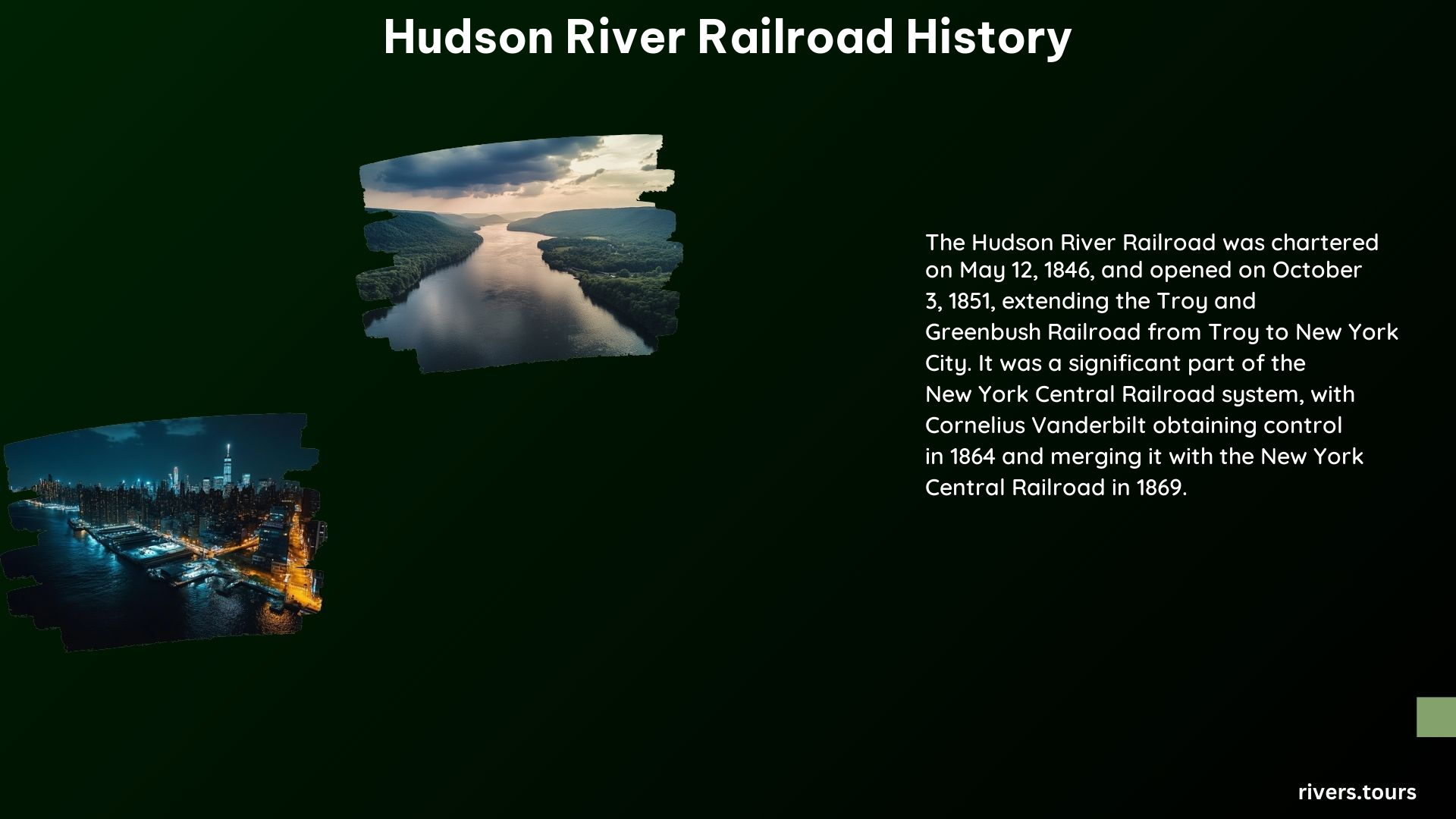The Hudson River Railroad played a pivotal role in the development of the Hudson Valley region, significantly impacting the economy and transportation in New York State. This comprehensive analysis delves into the history of the Upper Hudson River Railroad and the Hudson River Railway, highlighting their key milestones, significance, and impact on the region.
What were the Early Beginnings of the Hudson River Railroad?

The first steam-powered passenger train in the United States was operated by the Mohawk & Hudson Railroad, which began service on September 24, 1831, from Albany to Schenectady. This laid the foundation for the future development of the Hudson River Railroad.
When was the Upper Hudson River Railroad Chartered?

The Hudson River Railroad was chartered in 1846 to extend the Troy and Greenbush Railroad from Troy to New York City. It opened in three stages: from New York to Peekskill in September 1849, to New Hamburg in December 1849, and finally to Poughkeepsie on December 31, 1849.
How did the Hudson River Railway Expand the Railroad Empire?
The Hudson River Railway was built by Commodore Cornelius Vanderbilt, who became president of the Hudson River Railroad in 1867. He expanded the railroad empire to Chicago and changed its name to the New York Central & Hudson River Railroad in 1869.
What was the Significance and Impact of the Hudson River Railroad?
-
Economic Development: The Hudson River Railroad transformed the Hudson Valley by connecting New York City to Albany, fostering economic growth and development in the region. It enabled the transportation of goods and people, stimulating trade and commerce.
-
Transportation Revolution: The railroad reduced travel time from New York to Albany from several days by stagecoach to just a few hours, making it a vital artery for the region’s economy and population.
-
Suburbanization: The railroad facilitated the growth of suburbs like Irvington, which was created by the coming of the Hudson River Railroad. It brought new residents and businesses to the area, changing the character of the region.
What were the Statistics and Historical Travel Schedules of the Hudson River Railroad?
-
Travel Time: The inaugural special of the Hudson River Railroad opened on September 29, 1849, reducing travel time from New York to Peekskill to just 47 miles up the river.
-
Frequency of Service: By the late 1800s, the Hudson River Railroad operated multiple daily trains, with as many as 50 trains per day carrying freight to the port of Boston during World War II.
References
- https://www.timesunion.com/hudsonvalley/article/railroads-history-18519998.php
- https://www.riverrunbooks.com/pages/books/406078/hudson-river-railroad/hudson-river-and-the-hudson-river-railroad-with-a-complete-map-and-wood-cut-views-of-the-principal
- https://www.hudsonrivervalley.org/documents/401021/1049258/hvrr_10pt2_aggarwala.pdf/9de0bb28-960d-4454-b809-3faa8eca4fde
